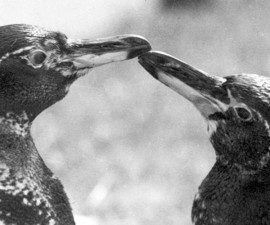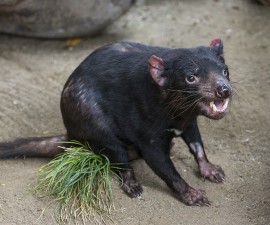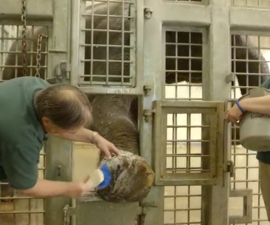BY Donna Parham
Photography by Ken Bohn
A unique region of coastal southern Africa is known as the fynbos (FINE-bose)—an Afrikaans word meaning “fine bush” due to its diminutive plant life. In this habitat, which is considered a global biodiversity hotspot, the hardy, evergreen shrubs grow low to the ground in sandy and limestone soil. They include a variety of African protea species, and provide a beautiful backdrop to sunny beaches that are home to African penguins Spheniscus demersus.
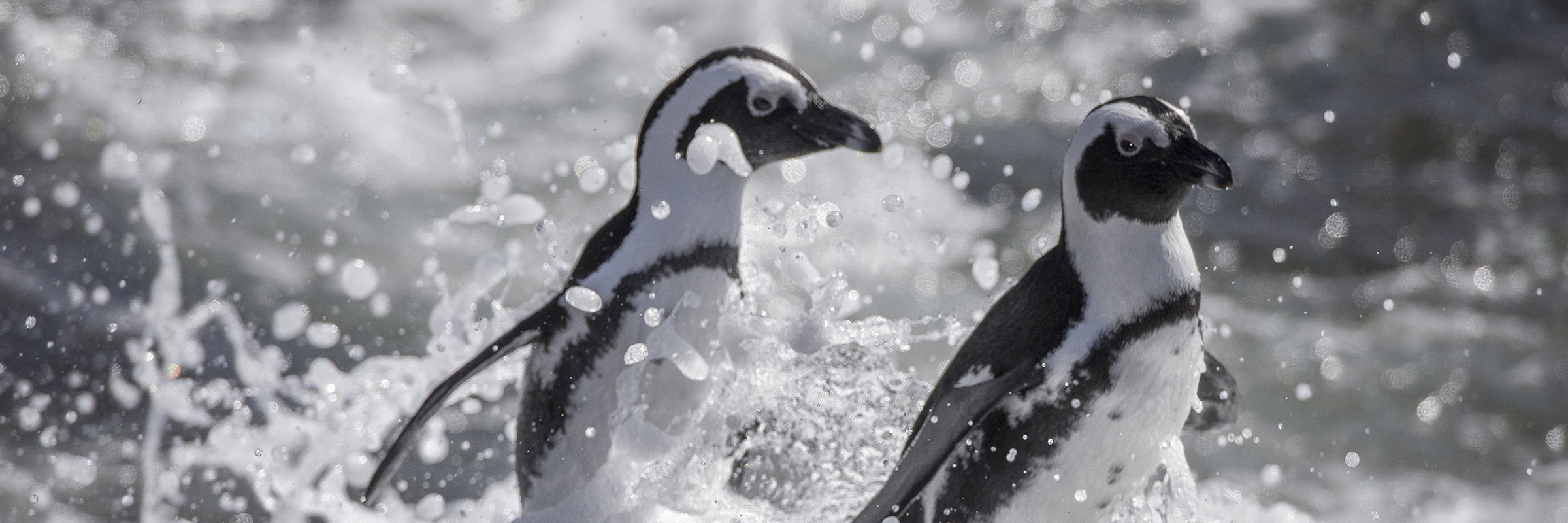
 There are 24 islands where African penguins live along the South African coast
There are 24 islands where African penguins live along the South African coast
By the Sea
You might picture penguins on an iceberg, but they are a diverse bunch of birds that live in coastal habitats throughout the Southern Hemisphere. Some species are found in the icy Antarctic, some on tropical islands, and still others in mild climates like the sandy beaches of Africa’s southernmost coast.
At Conrad Prebys Africa Rocks’ Cape Fynbos, not only will you be able to view penguins on the beach—you’ll be able to watch them underwater, too. Though they have wings, penguins don’t take to the sky like other birds. Instead, they are adapted to “fly” underwater. Flapping its short, flat, stiff wings, an African penguin can quickly zigzag in pursuit of fleeing fish.
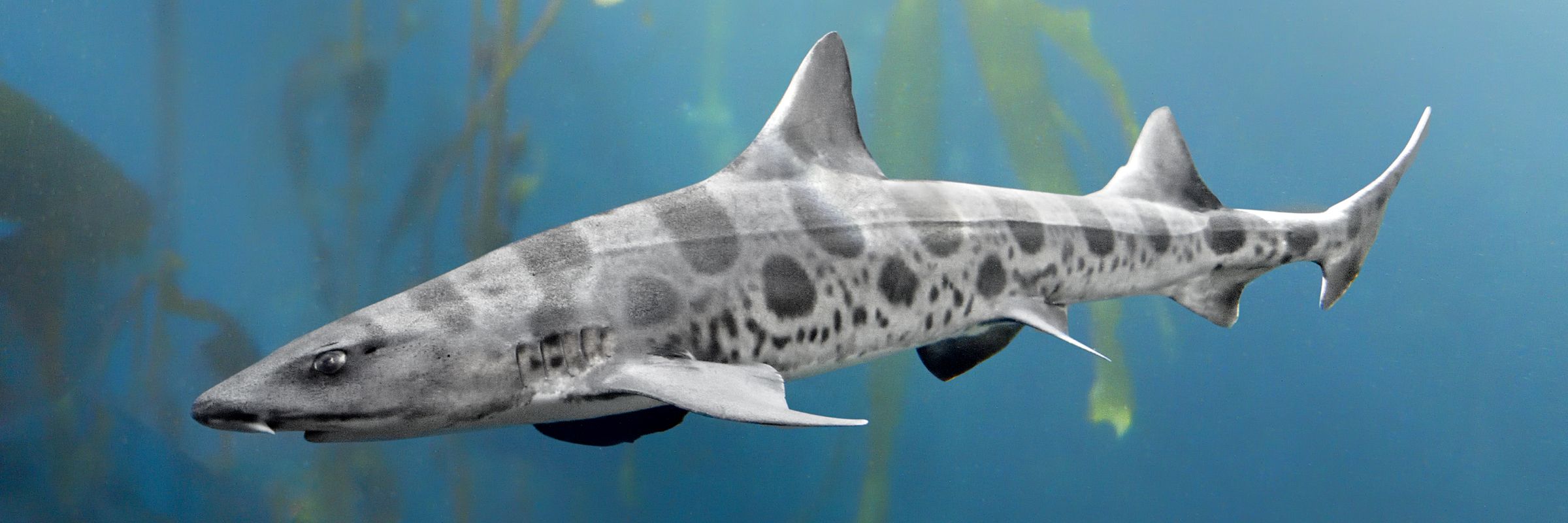
Safe Swimming
Something else you might see in the water with the penguins? Sharks! But don’t worry—the bottom-dwelling leopard sharks that share this habitat are not a danger to penguins. In fact, in the shallow waters near the South African shore, penguins and similar African shark species may find themselves nose to beak. Both species hunt for small fish, squid, and crustaceans.
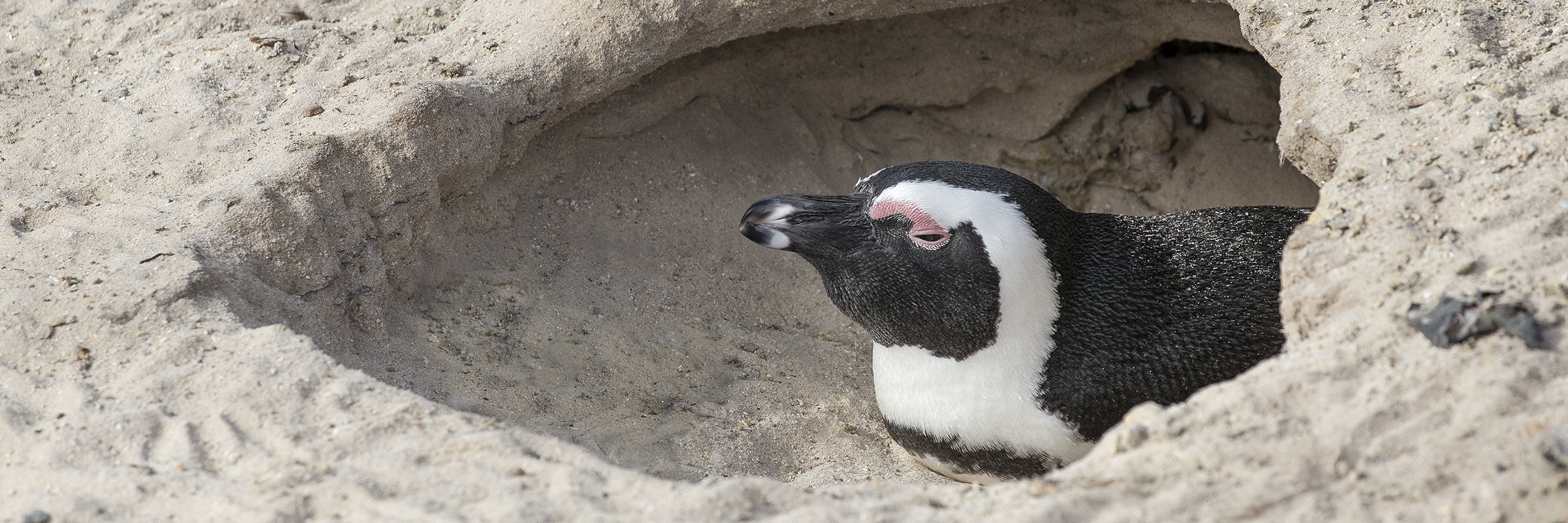
 There are 109 reptile species native to this region
There are 109 reptile species native to this region
Best Nest
African penguins prefer to nest in burrows they dig into sandy soil or guano (penguin poop), but habitat loss in many places makes that impossible. Some penguin parents have no choice but to nest in a shallow scrape on open ground. That makes their eggs and chicks vulnerable to heat stress, flooding, parasites, and predators—a big problem for an endangered species. So at Cape Fynbos, we’ll be helping to test appropriate types of artificial nests for African penguins that aren’t able to find a safe place to burrow.
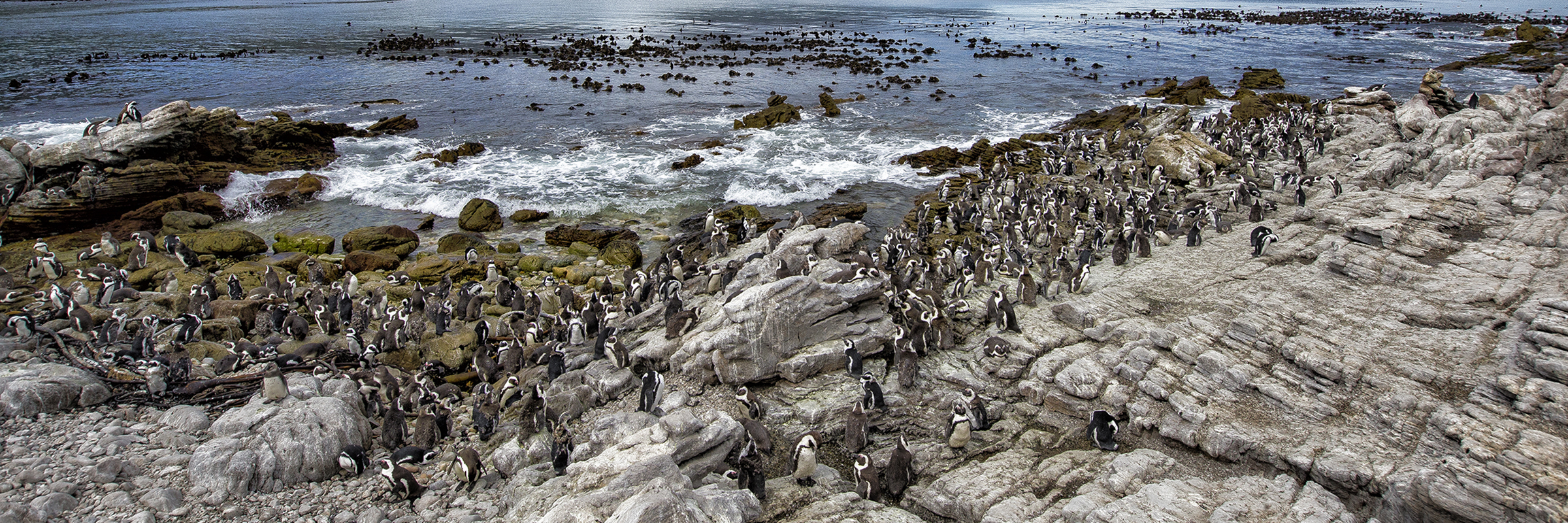
 There are 6,000 plant species found only in the Cape fynbos habitat
There are 6,000 plant species found only in the Cape fynbos habitat
Doing Our Part
San Diego Zoo Global is helping with African penguin conservation projects in South Africa. We are supporting a project that uses passive integrated transponders (PIT tags) to monitor resident, introduced, reintroduced, and translocated African penguins, and another project that monitors penguins’ travel or activity patterns at sea, using GPS technology. Last fall, some of our bird keepers traveled to South Africa to assist in chick rehabilitation.
With the construction of the new Penguin Beach exhibit in Africa Rocks’ Cape Fynbos, the Zoo is increasing the space available for breeding African penguins in North America. Zoo visitors will have front-row seats as our penguin colony grows into a large, noisy, and adorable flock!
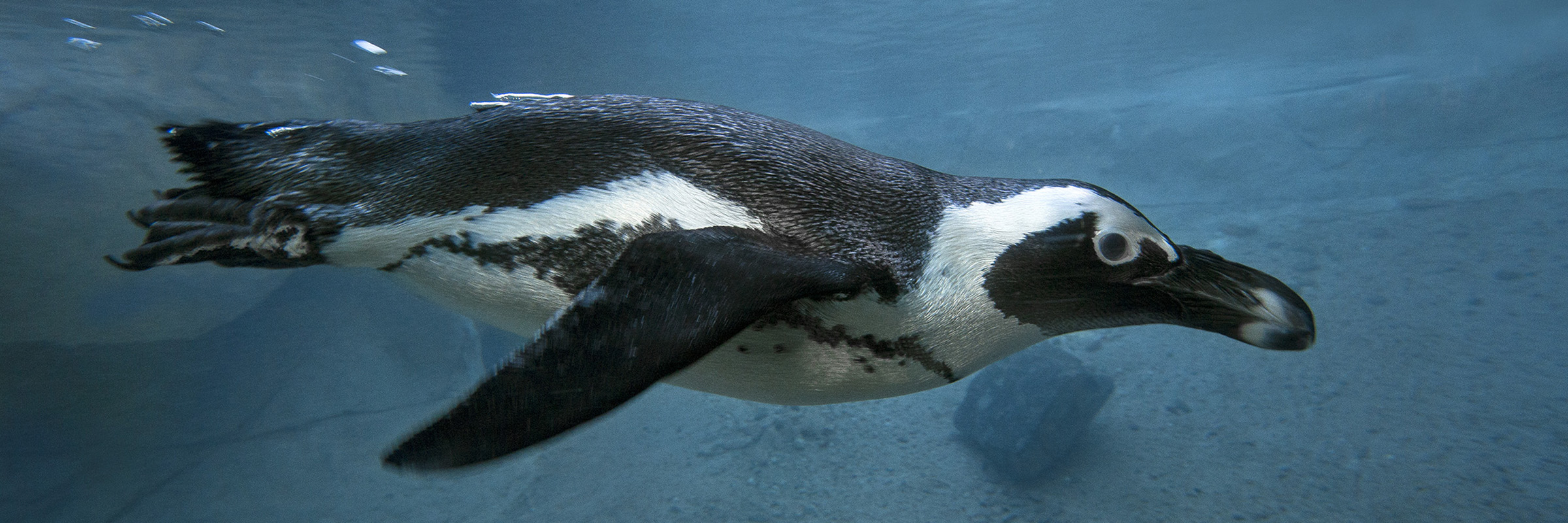
Have Breakfast at Penguins
If you would like to have a special, up-close experience at the Zoo’s penguin habitat, join your fellow penguin admirers for Breakfast at Penguins! Visit the Zoo before it opens to enjoy a buffet breakfast while you watch our African penguins waddle, swim, and play. On select Saturdays, you’ll enjoy an exclusive view, along with a special keeper talk and an animal presentation with an African animal. Book your breakfast online on our website: http://zoo.sandiegozoo.org/content/dining-events
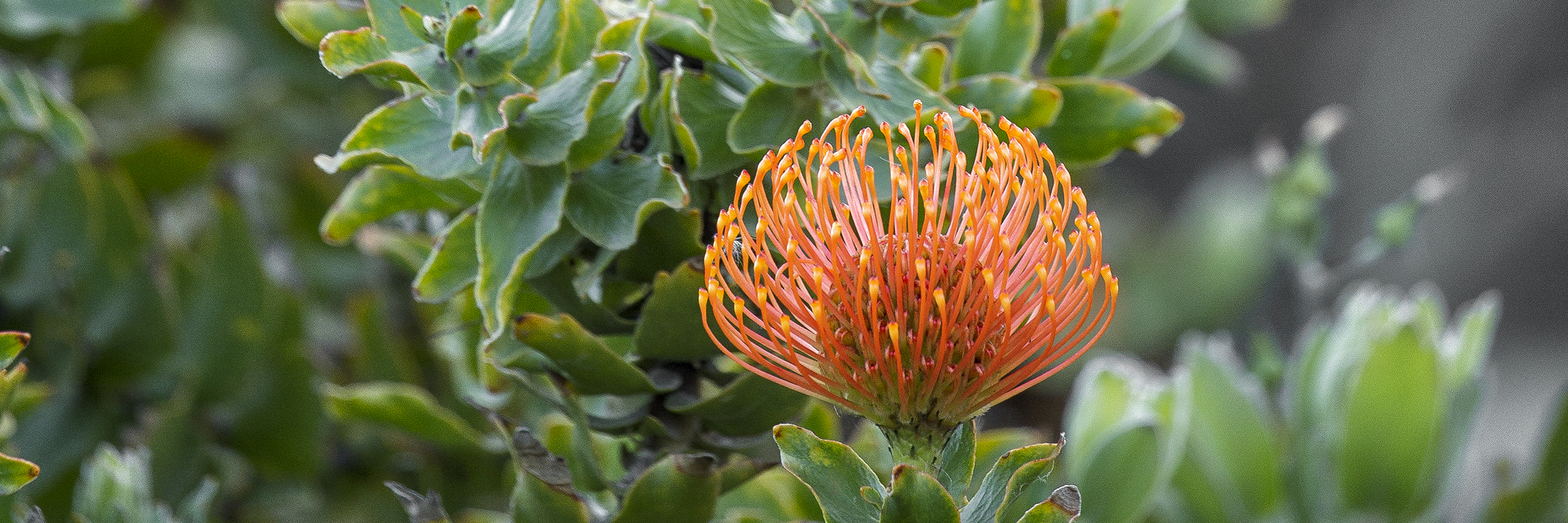
Featured Plant: Proteas
Africa’s Cape fynbos is dominated by proteas, like this giant nodding pincushion protea. Protea blossoms poke up from among the other low-growing plants to burst into colorful bloom in the spring, and they provide food and shelter for many animals.
Photography by: (Shark) barbaraaaa/iStock/Getty Images Plus


